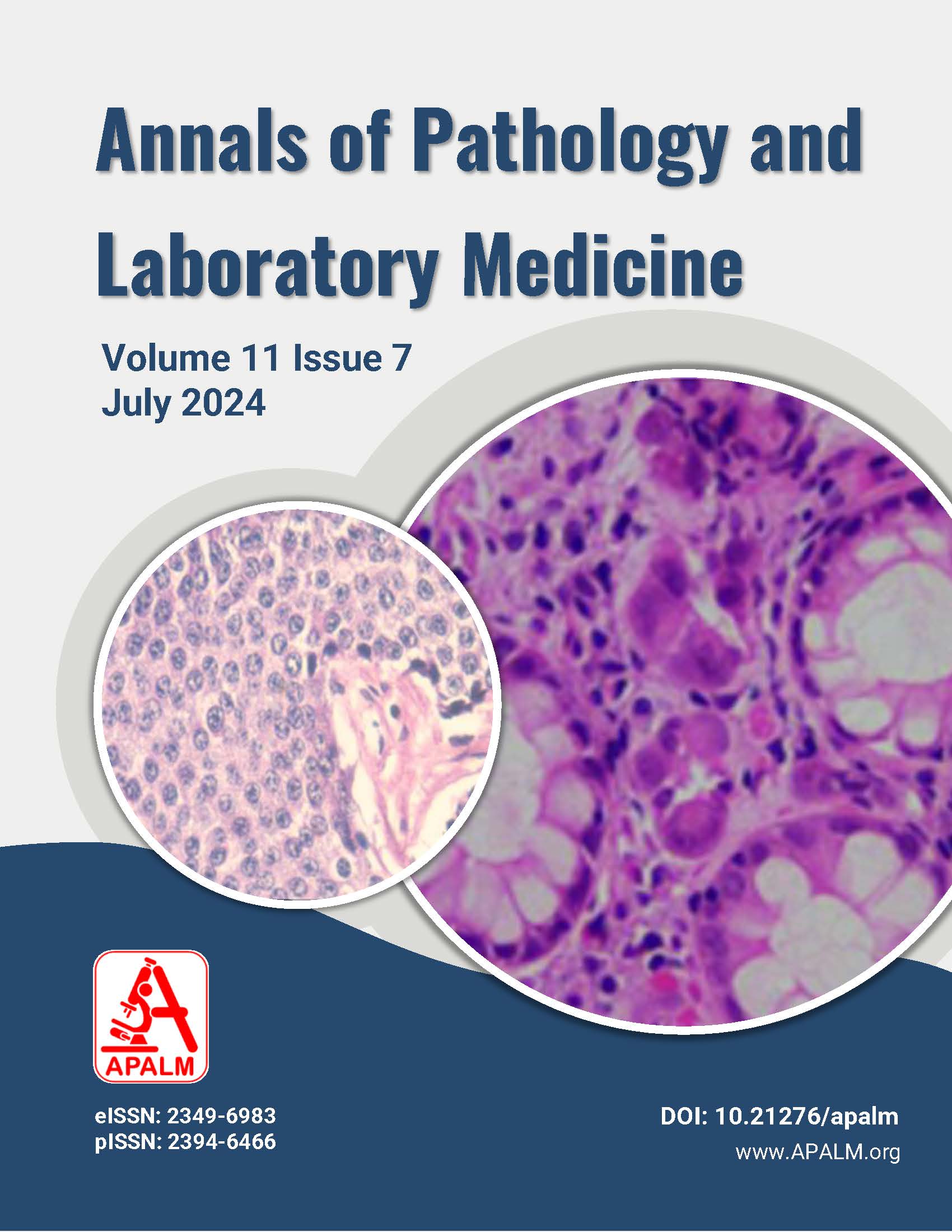Concurrent Benign Brenner Tumor and Mucinous Cystadenoma of an Ovary in a Postmenopausal Woman: A Case Report
DOI:
https://doi.org/10.21276/apalm.3297Keywords:
Mucinous cystadenoma, Brenner tumor, epithelial tumor, ovarian tumorsAbstract
Ovarian cancer is the most fatal gynecologic malignancy. The surface epithelial tumor is the most common type of ovarian cancer. Among these, mucinous tumors account for 10-15% of ovarian tumors. Surgical pathologists find that mucinous ovarian tumors are among the most challenging ovarian neoplasms to interpret. Sometimes, other types of surface epithelial cancers coexist with mucinous tumors. Because of this, it's critical to diagnose mucinous tumors accurately. On the other hand, the association of Brenner tumors with other neoplasms is rare. Ovarian Brenner tumor has always been discussed by pathologists as an enigmatic tumor because of its rarity and disputed histogenesis. Here, we report a rare case of mucinous cystadenoma of the ovary with a Brenner component in a 68-year-old postmenopausal woman.
References
Alan HD, Lauren N, Neri L, Ashley SR. Current Diagnosis and Treatment Obstetrics and Gynecology. McGraw Hill; 2013. p. 848–9.
Berek JS. Berek & Novak’s gynecology essentials. Baltimore, MD: Wolters Kluwer Health; 2020.
Chen VW, Ruiz B, Killeen JL, Cote TR, Wu XC, Correa CN. Pathology and classification of ovarian tumors. Cancer. 2003;97.
Hemalatha AL, Konanahalli P. Bilateral malignant Brenner tumor of ovary. J Obstet Gynecol India. 2005;55:81–2.
Sridevi S, Rao V, Kumar S, Bhagyalakshmi A. Mucinous cystadenoma with Brenner tumor: A Case Report. J Evid Based Med Healthc. 2015;2(4):455–8.
Zaloudek CJ, Garg K. Diagnostic histopathology of tumors. 4th ed. Fletcher CDM, editor. China: Saunders; 2013.
Juan R. Rosai and Ackerman’s Surgical Pathology. 2017. p. 1374–90.
Kato H, Kanematsu M, Furui T, Morishige K, Hirose Y. Ovarian mucinous cystadenoma coexisting with benign brenner tumor: MR imaging findings. Abdom Imaging. 2013;38:412–6.
Jung SE, Lee JM, Rha SE, Byun JY, Jung JI, Hahn ST. CT and MR imaging of ovarian tumors with emphasis on differential diagnosis. Radiographics. 2002;22:1305–25.
Green GE, Mortele KJ, Glickman JN, Benson CB. Brenner tumors of the ovary: sonographic and computed tomographic imaging features. J Ultrasound Med. 2006;25:1245–51.
Ioffe OB, Simsir A, Silverberg SG. Pathology. In: Js PGO, Hacker NF, editors. Practical Gynaecologic Oncology. Lippincott Williams & Wilkins Company; 2000. p. 213–4.
Waxman M. Pure and mixed Brenner tumor of the ovary: clinicopathologic and histogenetic observations. Cancer. 1979;43:1830–9.
Philip B, Clement RH. Ovarian Surface Epithelial-Stromal Tumors. NY: Raven Press; 2009.
Pradhan P, Mohanty L, Pradhan D, Pujari S, Kar A. Benign brenner tumor of ovary with mucinous cystadenoma: a case report. Asia J Pharm Health Sci. 2017;7:1643–6.
Nazari F, Dehghani Z. Coexistence of benign brenner tumor with mucinous cystadenoma in an ovarian mass. Iran J Pathol. 2020;15(4):334–7.
Downloads
Published
Issue
Section
License
Copyright (c) 2024 Samrita Samaddar, Abhijit Gajendra Bhanji, Vivek Sreekumaran Nair

This work is licensed under a Creative Commons Attribution 4.0 International License.
Authors who publish with this journal agree to the following terms:
- Authors retain copyright and grant the journal right of first publication with the work simultaneously licensed under a Creative Commons Attribution License that allows others to share the work with an acknowledgement of the work's authorship and initial publication in this journal.
- Authors are able to enter into separate, additional contractual arrangements for the non-exclusive distribution of the journal's published version of the work (e.g., post it to an institutional repository or publish it in a book), with an acknowledgement of its initial publication in this journal.
- Authors are permitted and encouraged to post their work online (e.g., in institutional repositories or on their website) prior to and during the submission process, as it can lead to productive exchanges, as well as earlier and greater citation of published work (See The Effect of Open Access at http://opcit.eprints.org/oacitation-biblio.html).










